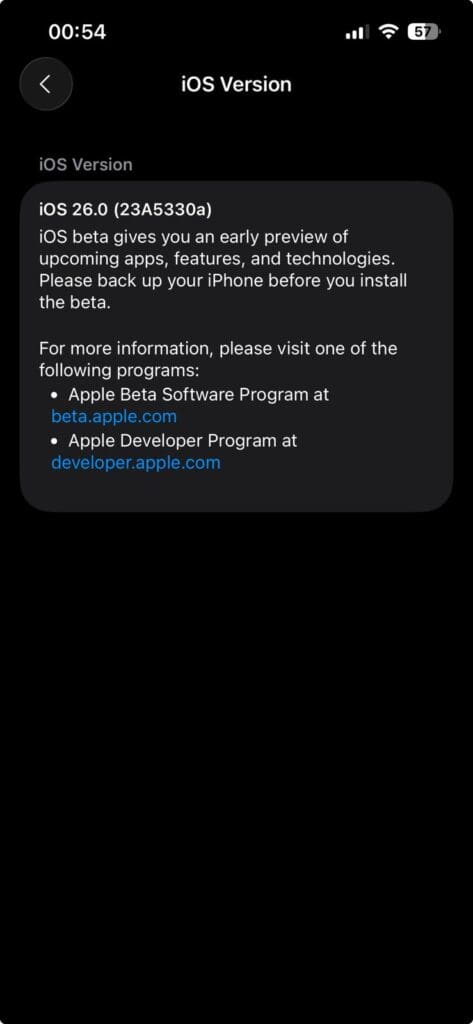It’s early summer 2025, and it’s time to get ready for the next macOS, iOS, iPadOS, and even watchOS releases. This year it will be named all version 26, some OS versions skipping lot of numbering versions, but who cares, now it is all in same brand scheme, is that right Tim?
Soon it won’t be just WWDC bringing a new OS—Apple will also unveil its next batch of devices in the autumn.
So buckle up: the developer betas arrive right after WWDC, ready to be installed on your backup device. As always, back up everything before you start the journey.
For me, the wait ended when my backup iPhone 13 Pro finally appeared in the developer account (my old iCloud hadn’t been used in a while). After the first reboot, the shiny new iOS 26 Developer Beta 1 with the “Glass Design” landed.
As a Windows user, this felt oddly familiar. Apple’s Liquid Glass Design reminded me of a mix between Windows 7 and Windows Vista—especially in Dark Mode, which looks more like the Windows 7 Aero theme than the sleek glass aesthetic I was expecting. Still, it was stable enough.
A few weeks later, Beta 2 arrived. Some elements of the Liquid Glass Design were toned down, but the overall vibe still blended old Windows Vista/7 aesthetics with Apple’s new direction. It remained stable, with only one app causing trouble—likely a TestFlight bug of that application, but who cares now, seems fixed after reporting issue as usual.
Subsequent updates refined the experience further. By Beta 6/7 (I’m not sure which), most first‑party Apple apps—Apple App Store, Camera, Photos, Messages (even iMessage features works too, tested with few iOS friends which have it enabled), Clock, Weather, Settings, and even Apple Music (yeah, I’m paying for it just like Spotify but will cares, mixture of Music)—started showing the liquid‑glass look, especially when paired with Dark Mode. The UI felt more cohesive, and the beta proved surprisingly stable on my four‑year‑old iPhone 13 Pro (originally at 85 % battery, now charged via Lightning cable, Lightning‑to‑USB‑C dongle, a USB-C cable, and a MagSafe capable wireless charger).
Now we’re approaching the final Beta 8 before the release candidate, alongside the upcoming Apple event announcing the iPhone 17 series. The stability is top‑notch—far better than the earlier, more problematic iOS 18.x betas and the iOS 18.0 launch.
All accompanying comments were written in Apple Notes. The text was checked for clarity and grammar using Proton Lumo. The cover image is a screenshot from the latest Beta 8 build of iOS 26 on my personal iPhone 13 Pro.
